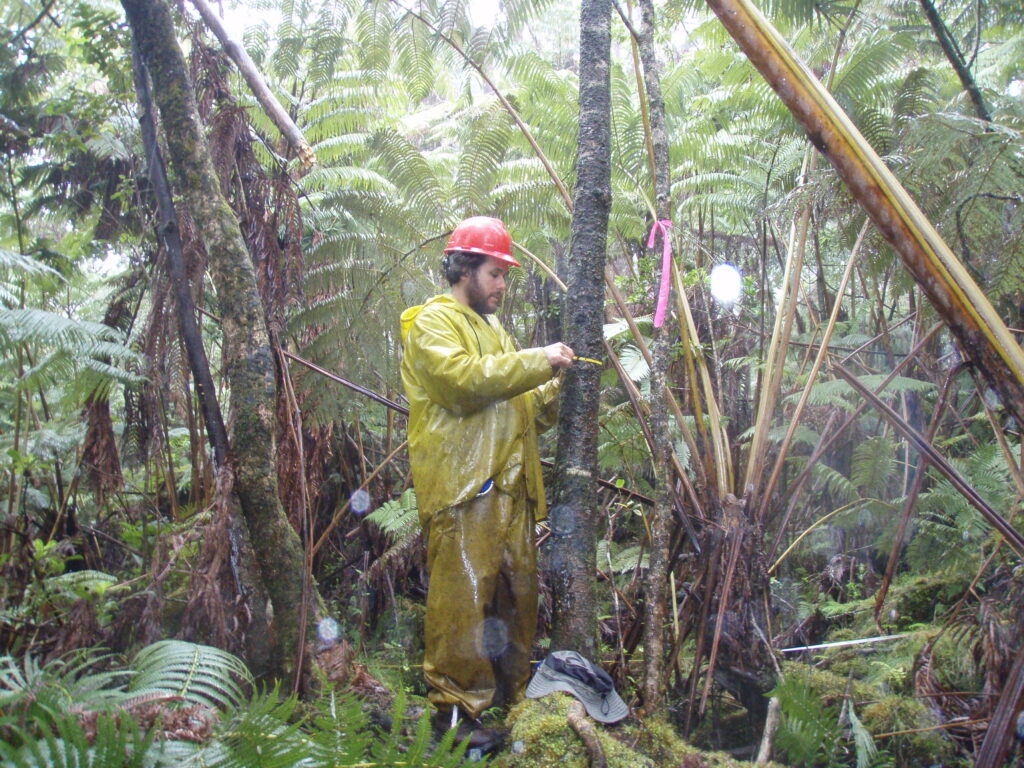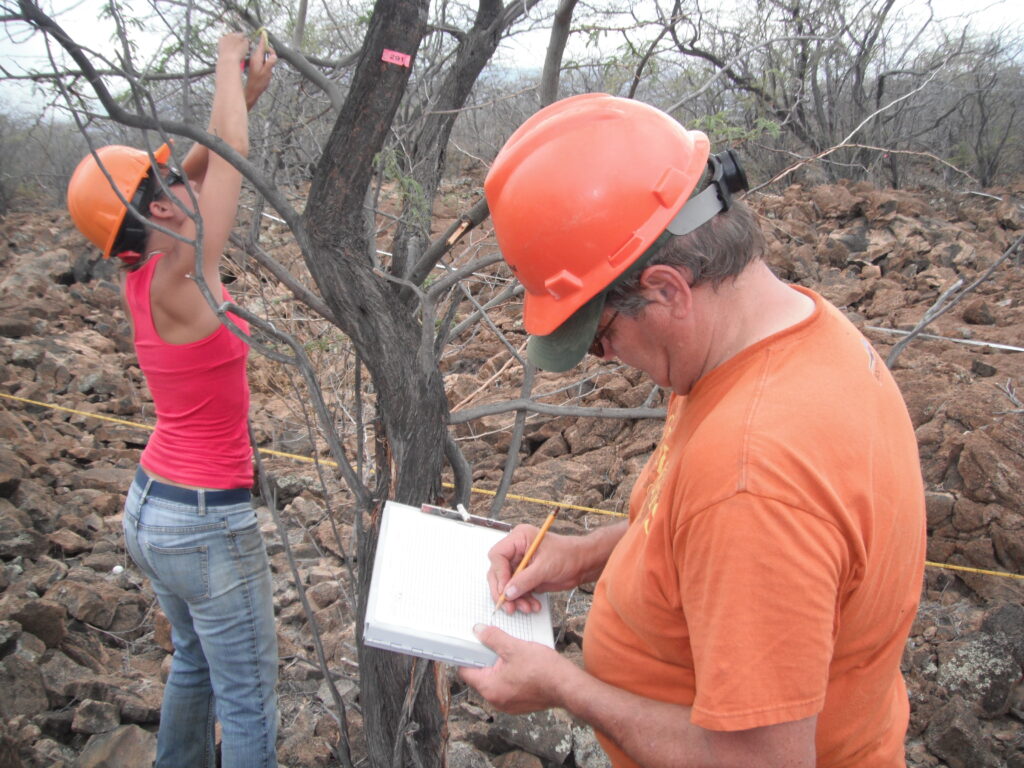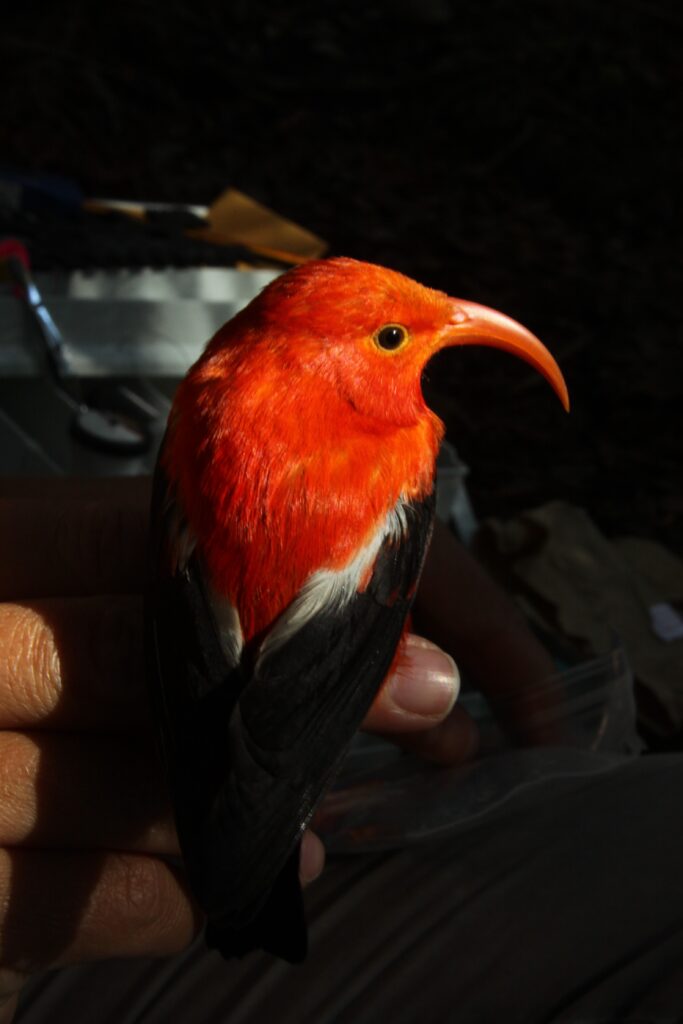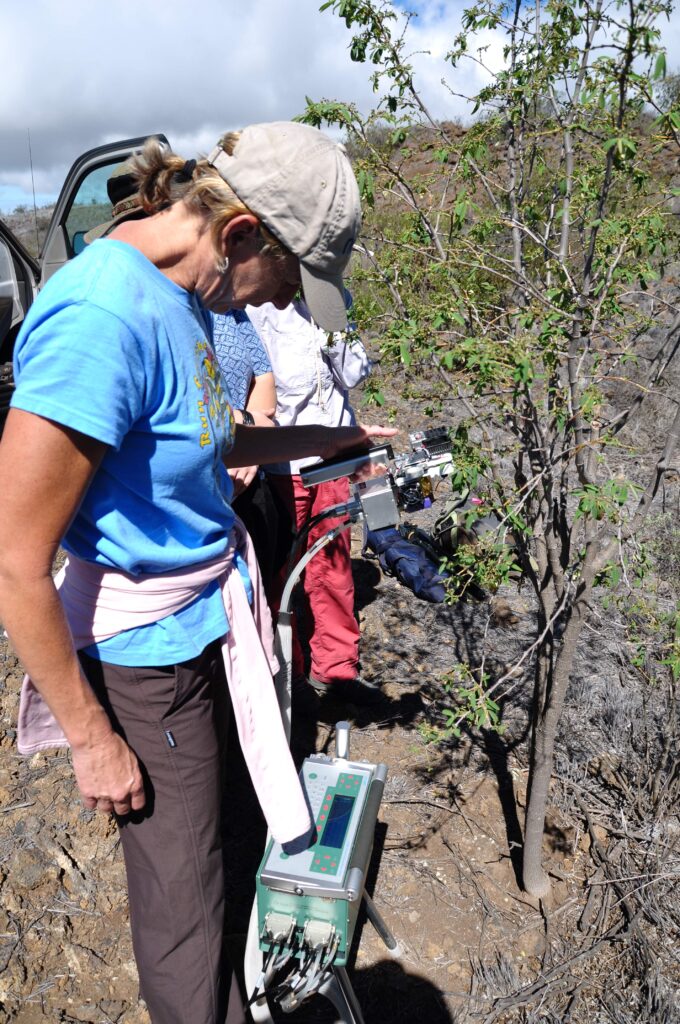
Based upon the unique attributes, threats, and management needs that exist in Hawai‘i, we have identified some particular research themes that we believe HETF and its underlying purpose as an experimental forest are especially suited to support. Among these themes are:
- Structure and function of tropical wet forest and dry forest watersheds and their component parts.
This emphasis area will focus on how tropical forest ecosystems work. Research will strive to gain a better understanding of the physical, chemical, and biological processes at all relevant geographic and time scales. - Structure and function of freshwater and nearshore marine ecosystems in tropical landscapes.
- Invasive Alien Species.
One of the greatest threats Hawaiian forests currently face are invasive alien species. It is impossible to determine what new challenges resource managers will be faced with in the future. But this underscores the need for long-term data bases in Hawai‘i. - Methods/tools for restoration of tropical forest ecosystems.
Hawaiian forests have been subject to a number of natural and human-induced perturbations over the last 250 years. A key information need for land managers involves learning the most effective and cost-efficient methods for restoring disturbed habitats and landscapes. There are ample opportunities for investigating different restoration methods in different kinds of plant communities that are found on the HETF. - Impact of global climate change on tropical ecosystems.
- Native Hawaiian/traditional resource management techniques.
There is a need to provide opportunities for investigation of traditional land management practices originally used by native Hawaiians (Polynesians). The HETF has the capacity to accommodate some experimentation of customary traditional uses and learn how the forest ecosystem responds to these methods of management. - Specialty wildland management topics.
There are some special or unique land and resource management activities that require additional research or demonstration to hone management techniques and inform future decision-making. Some examples that could be accommodated in the HETF include:- Impacts of fire / fire ecology
- Reintroduction of T&E Species
- Introduction of biocontrol agents for invasive species



